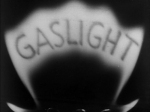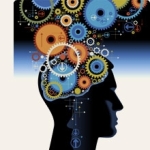 Introduction & Brief History
Introduction & Brief History
Psychiatric disorders have been around since the beginning of time. The only thing that has changed throughout the years is the way that we have treated them. Historically, mental illnesses were first regarded as having supernatural causes, being the work of evil spirits or demonic possession, due to the lack of scientific knowledge that would come in later years. Thus, barbaric practices such as trephination (drilling three holes in the person’s skull to release the demons), starvation, whippings, scalding, stretching, and the use of unthinkably inhumane devices were utilized to treat those suffering from mental illness through means of torture. Theories, research, and science would later uncover underlying physical causes for these illnesses, as well as lead to the discovery of psychiatric medications in the 1950’s (Comer ch. 1).
 Since the middle of the 20th century, when these drugs were first discovered, pharmacotherapy has been the leading treatment option for a myriad of mental health disorders. As time went on, the prescribing of psychotropic medications continued to increase substantially. In 1987, after the introduction of Prozac, the use of antidepressants alone quadrupled, increased again another 150 percent between 1996 and 2006, and continues to be on the rise. Likewise, the use of antipsychotics tripled between 1995 and 2008 in the United States, and the use of many other psychotropic medications follow the same trend. In fact, “The [overall] use of psychotropic drugs [in general] by adult Americans increased 22 percent [just] from 2001 to 2010 [alone], with one in five adults now taking at least one psychotropic medication, according to industry data” (Smith). The Division of Services and Intervention Research at the National Institute of Mental Health (NIMH) published an article stating that “There is a pressing need […] to improve mental health treatments [because although] U.S. mental health spending has increased dramatically, mainly because of the rapid adoption of newer psychotropic medications, [fewer than a quarter of people with serious mental illnesses receive appropriate care]” (Wang et al.). The article goes on to state that “Because of a general lack of information on the relative effectiveness of different treatments, payers are uncertain about the [value] of current spending, which in turn may deter new investments to reduce unmet need,” then explains the desperate need “[…] for improving practice and policy […]” throughout their article, point by point, and finally, they bring home their position very strongly by stating that “Making decisions on medical treatments based on [valid evidence] is critical for improving health care quality, outcomes, and value in the United States” (Wang et al.). The NIMH is absolutely correct- there is an urgent need to improve the treatment mental healthcare patients are receiving.
Since the middle of the 20th century, when these drugs were first discovered, pharmacotherapy has been the leading treatment option for a myriad of mental health disorders. As time went on, the prescribing of psychotropic medications continued to increase substantially. In 1987, after the introduction of Prozac, the use of antidepressants alone quadrupled, increased again another 150 percent between 1996 and 2006, and continues to be on the rise. Likewise, the use of antipsychotics tripled between 1995 and 2008 in the United States, and the use of many other psychotropic medications follow the same trend. In fact, “The [overall] use of psychotropic drugs [in general] by adult Americans increased 22 percent [just] from 2001 to 2010 [alone], with one in five adults now taking at least one psychotropic medication, according to industry data” (Smith). The Division of Services and Intervention Research at the National Institute of Mental Health (NIMH) published an article stating that “There is a pressing need […] to improve mental health treatments [because although] U.S. mental health spending has increased dramatically, mainly because of the rapid adoption of newer psychotropic medications, [fewer than a quarter of people with serious mental illnesses receive appropriate care]” (Wang et al.). The article goes on to state that “Because of a general lack of information on the relative effectiveness of different treatments, payers are uncertain about the [value] of current spending, which in turn may deter new investments to reduce unmet need,” then explains the desperate need “[…] for improving practice and policy […]” throughout their article, point by point, and finally, they bring home their position very strongly by stating that “Making decisions on medical treatments based on [valid evidence] is critical for improving health care quality, outcomes, and value in the United States” (Wang et al.). The NIMH is absolutely correct- there is an urgent need to improve the treatment mental healthcare patients are receiving.

Statistical Facts & Integrative Approach
Considering that the NIMH reports that “[it is] estimated [that] 26.2 percent of Americans ages 18 and older — about one in four adults — suffer from a diagnosable mental disorder in a given year,” and that “[…] mental disorders are the leading cause of disability in the U.S. and Canada,” psychotropic medications can definitely help a large number of people (NIMH: The Numbers Count). There are literally millions of people impacted by mental illnesses, including the patients themselves, their family and friends, as well as the other members within society that also feel the burden, and even our government. However, while psychotropic medications successfully offer many of these patients relief, they may not always be the most effective, safest, most ideal, or preferred method of treatment. In fact, even for a single mental disorder, there is no one-size-fits-all treatment because each patient has different needs, different responses to, and different feelings about various healthcare approaches. As with any type of illness, whether physical or mental, practitioners should provide holistic and integrative care, considering all of the unique details of every patient’s case. Thus, alternative treatments should be offered and recommended to mental health patients, either in place of or as an adjunct to psychotropic medications, because failing to utilize these options is providing inadequate levels of care.

Physical Activity & Exercise
One of the most promising alternative treatments for psychiatric disorders is simply good, old-fashioned physical activity, which has been found to be especially effective in the treatment of major depressive disorder, anxiety and panic disorders, schizophrenia, and cognitive impairment disorders. Many studies have concluded that exercise, especially aerobic exercise, is more effective than placebo treatments and is every bit as effective as standard treatment with psychotropic medications (Eyre, Papps, and Baune; Saeed, Antonacci, and Bloch). Some might argue that if physical activity is only equally successful in the treatment of mental health disorders, and not superior to pharmacotherapy, then there is no reason to consider this method of treatment to be a preferable option. However, these individuals fail to recognize that while the reduction in symptomology is equal, exercise offers something that medications cannot, which is a major reduction in possible side-effects (Eyre, Papps and Baune). This is extremely significant considering that many patients on psychiatric medications experience side-effects than can range from mild to severe, including dry mouth, drowsiness, muscle spasms, rigidity, tremors, headache, nausea, insomnia, blurred vision, dizziness, sexual dysfunction, constipation, loss of coordination, blackouts, seizures, slurred speech, drooling, hallucinations, rash, weight gain, vomiting, fatigue, birth defects, and increased violent behavior, just to name a few (NIMH: Mental Health Medications). Even more seriously, psychiatric medications may have side-effects that can be life-threatening, such as an increased rate of suicidal ideation and behavior, serotonin syndrome, heart and lung depression, heart problems and cardiovascular events (such as cardiac arrest or heart failure), stroke, hemorrhaging, hypothermia, lung and throat infections that may be fatal, cerebrovascular events, coma, neuroleptic malignant syndrome, Parkinson’s disease, pancreatitis, fatal blood clots, liver failure, and other side-effects that result in death (CCHR). The benefits of physical activity, on the other hand, are innumerable, including little or no side-effects, improved self-esteem, no stigmatization unlike other therapies, and better health and fitness overall. Patients who exercise regularly at a moderate to high intensity level tend to sleep better, experience reduced levels of anxiety, feel happier, possess more energy, have lower numbers of medical comorbidities, enjoy increased cognitive function, and, very importantly, achieve higher rates of remission and present significantly lower rates of relapse…and isn’t that the whole point, anyway? (Eyre, Papps and Baune; Zschucke, Gaudlitz and and Ströhle). According to an article published in the Journal of Preventive Medicine and Public Health, “[…exercise] has been found to normalize reduced levels of brain-derived neurotrophic factor (BDNF) and therefore has neuroprotective or even neurotrophic effects, […induces changes in] different neurotransmitters such as serotonin and endorphins, which relate to mood, and positive effects of exercise on stress reactivity (e.g., the hypothalamus-pituitary-adrenal axis), […and has] anxiolytic effects […] mediated by atrial natriuretic peptide […]” (Zschucke, Gaudlitz and Ströhle). While some might express concern that the effects of exercise take slightly longer to present in the patient, as mentioned before, it also offers significantly higher rates of remission and relapse prevention and a significantly lower side-effect profile than do psychotropic medications (Eyre, Papps and Baune).

Psychotherapy & Counseling Interventions
Various forms of psychotherapy, such as cognitive behavioral therapy (CBT), dialectical behavioral therapy (DBT), or exposure therapy for example, have also proven extremely effective in clinical studies and have even exhibited better results than pharmacotherapy with certain mental health disorders. For example, researchers at Yale and Rutgers State University of New Jersey conducted a study to measure the efficacy of CBT and fluoxetine for the treatment of binge eating disorder and the findings were heavily weighted in favor of cognitive behavioral therapy. In fact, they not only found CBT to be superior to the fluoxetine, but concluded that the remission rates with fluoxetine weren’t even superior to the placebo in the treatment of binge eating disorder (Grilo, Masheb and Wilson). Another study that was conducted at outpatient clinics at the University of Pennsylvania and Vanderbilt University found that patients with moderate to severe major depressive disorder responded equally well to antidepressants and cognitive therapy. The reduction in symptoms, the remission rates, and the relapse rates were fairly balanced between the two treatment options, but when the patients were withdrawn from the two treatments, those who had received cognitive therapy fared better than those who had been treated with psychotropic medications, having significantly lower rates of relapse. In other words, while treatment with cognitive therapy had lasting effects on the patient’s mental health, pharmacotherapy required continued care indefinitely to keep patients from relapsing. Time and money aside, the most important detail to recognize is that patients receiving treatment with psychiatric medications have to permanently resign to and deal with the many side-effects that accompany the remission with such therapy (Hollon et al.).
 The same is true with various phobias, which one study concluded can be treated equally well with either benzodiazepines or cognitive behavioral therapy. While the benzodiazepines have immediate effect on the patient and cognitive behavioral therapy may take longer with some types of phobias, such as social phobia, CBT offers the patient lasting results, lower relapse rates, and no side-effects at all (Otto, Pollack and Gould). However, another study concluded that “[exposure] therapy alone yielded a further improvement during follow-up, whereas exposure therapy combined with sertraline and sertraline alone showed a tendency towards [deterioration] after the completion of treatment” (Haug et al.). In other words, it actually hindered patients in the long run to include pharmacotherapy at all, even as an adjunct therapy. Also noteworthy is the fact that some of the other more specific phobias can be treated in one session, which then eliminates the only benefit that psychotropic medications offer in the first place, which is the sometimes possible faster results (Öst). Yet another example can be seen in the treatment of borderline personality disorder (BPD), which is one of the most difficult psychiatric disorders to treat and can be stressful for everyone involved, even the practitioners. Studies have concluded that “pharmacotherapy effects, while clinically significant, are nonetheless modest in magnitude,” and that “The empirical evidence supporting psychosocial treatments for BPD is similarly meager, [which] poses a special problem […and to] date [cognitive-behavioral therapy (specifically, Dialectical Behavior Therapy or DBT) is the only treatment that has been shown in controlled clinical trials to be effective treating BPD]” (Koerner and Linehan; Linehan). These are only a few of the countless examples that exist in which psychotherapy is a more favorable option than prescription drugs and, just like exercise, psychotherapy is another example of a treatment that offers at the very least equal (and often better) results in symptom reduction, remission, and relapse prevention, yet also has a negligible side-effect profile to offer the patients, again making it a more attractive option than psychopharmaceuticals. Yet, “fewer […] patients receive psychotherapy than in the past. In 1996, one-third of patients taking [psychotropic medications] also received therapy, [but by] 2005, only one-fifth of patients did, according to a study [focused primarily on the reduction of therapy and increased use of anti-depressants alone that included…] more than 50,000 medical surveys, […which was] co-authored by Mark Olfson, MD, professor of clinical psychiatry at Columbia University” (Smith). This is odd since the research has proven the limitations of psychotropic medications, including anti-depressants, especially since “‘[…] at least half the folks who are being treated with antidepressants aren’t benefiting [from the active pharmacological effects of the drugs themselves but from a placebo effect],’ says Steven Hollon, PhD, a psychology professor at Vanderbilt University who has conducted extensive research on the effectiveness of antidepressants. [He goes on to note that] ‘If people knew more, I think they would be a little less likely to go down the medication path than the psychosocial treatment path’” (Smith). After conducting research on the matter, Hollon also maintains that “‘[…] patients initially need to apply the skills they learned during [cognitive therapy] treatment in a concerted fashion, but that these compensatory strategies eventually become second nature,’ […],” and an article published by the APA further elaborated that “These strategies include having patients examine their negative thought patterns and the creation of a step-by-step plan to help cope with life stresses” (Smith). It is abundantly clear that the benefits of psychosocial treatment far outweigh the psychotropic medications that are usually used instead. This is probably why, “After reviewing the published literature, the National Health Service in England adopted cognitive behavioral therapy as [a first-line treatment] for mild and moderate depression [since] the risk-benefit ratio is “poor” for antidepressants. In 2011, the British government invested £400 million over the next four years to increase patient access to psychotherapy to treat depression and anxiety disorders. The [British’s] effort [to implement this decision also included] plans to train up to 6,000 therapists in cognitive behavioral therapy,” which only leaves Americans asking why we aren’t doing the same (Smith). Why, after so much evidence that we are not using the most effective and a far safer treatment, are we continuing to provide such lacking and inappropriate care to our citizens of what is supposed to be the greatest nation in the world?
The same is true with various phobias, which one study concluded can be treated equally well with either benzodiazepines or cognitive behavioral therapy. While the benzodiazepines have immediate effect on the patient and cognitive behavioral therapy may take longer with some types of phobias, such as social phobia, CBT offers the patient lasting results, lower relapse rates, and no side-effects at all (Otto, Pollack and Gould). However, another study concluded that “[exposure] therapy alone yielded a further improvement during follow-up, whereas exposure therapy combined with sertraline and sertraline alone showed a tendency towards [deterioration] after the completion of treatment” (Haug et al.). In other words, it actually hindered patients in the long run to include pharmacotherapy at all, even as an adjunct therapy. Also noteworthy is the fact that some of the other more specific phobias can be treated in one session, which then eliminates the only benefit that psychotropic medications offer in the first place, which is the sometimes possible faster results (Öst). Yet another example can be seen in the treatment of borderline personality disorder (BPD), which is one of the most difficult psychiatric disorders to treat and can be stressful for everyone involved, even the practitioners. Studies have concluded that “pharmacotherapy effects, while clinically significant, are nonetheless modest in magnitude,” and that “The empirical evidence supporting psychosocial treatments for BPD is similarly meager, [which] poses a special problem […and to] date [cognitive-behavioral therapy (specifically, Dialectical Behavior Therapy or DBT) is the only treatment that has been shown in controlled clinical trials to be effective treating BPD]” (Koerner and Linehan; Linehan). These are only a few of the countless examples that exist in which psychotherapy is a more favorable option than prescription drugs and, just like exercise, psychotherapy is another example of a treatment that offers at the very least equal (and often better) results in symptom reduction, remission, and relapse prevention, yet also has a negligible side-effect profile to offer the patients, again making it a more attractive option than psychopharmaceuticals. Yet, “fewer […] patients receive psychotherapy than in the past. In 1996, one-third of patients taking [psychotropic medications] also received therapy, [but by] 2005, only one-fifth of patients did, according to a study [focused primarily on the reduction of therapy and increased use of anti-depressants alone that included…] more than 50,000 medical surveys, […which was] co-authored by Mark Olfson, MD, professor of clinical psychiatry at Columbia University” (Smith). This is odd since the research has proven the limitations of psychotropic medications, including anti-depressants, especially since “‘[…] at least half the folks who are being treated with antidepressants aren’t benefiting [from the active pharmacological effects of the drugs themselves but from a placebo effect],’ says Steven Hollon, PhD, a psychology professor at Vanderbilt University who has conducted extensive research on the effectiveness of antidepressants. [He goes on to note that] ‘If people knew more, I think they would be a little less likely to go down the medication path than the psychosocial treatment path’” (Smith). After conducting research on the matter, Hollon also maintains that “‘[…] patients initially need to apply the skills they learned during [cognitive therapy] treatment in a concerted fashion, but that these compensatory strategies eventually become second nature,’ […],” and an article published by the APA further elaborated that “These strategies include having patients examine their negative thought patterns and the creation of a step-by-step plan to help cope with life stresses” (Smith). It is abundantly clear that the benefits of psychosocial treatment far outweigh the psychotropic medications that are usually used instead. This is probably why, “After reviewing the published literature, the National Health Service in England adopted cognitive behavioral therapy as [a first-line treatment] for mild and moderate depression [since] the risk-benefit ratio is “poor” for antidepressants. In 2011, the British government invested £400 million over the next four years to increase patient access to psychotherapy to treat depression and anxiety disorders. The [British’s] effort [to implement this decision also included] plans to train up to 6,000 therapists in cognitive behavioral therapy,” which only leaves Americans asking why we aren’t doing the same (Smith). Why, after so much evidence that we are not using the most effective and a far safer treatment, are we continuing to provide such lacking and inappropriate care to our citizens of what is supposed to be the greatest nation in the world?
Areas of Concern that Need to Be Addressed
In “Inappropriate Prescribing,” the author points out that according to APA President Suzanne Bennett Johnson, PhD, “For many patients, medications do not provide the same benefits and coping skills as psychotherapy […] Many patients don’t want to take more drugs [and] Patients should be informed about the advantages, limitations and potential harm of all evidence-based treatments for their condition so they can make an informed choice [because all too] often, psychotropic medication is the only option that is offered” (Smith). Again, I ask you- why are we failing Americans? Why are we not even giving them a choice? Why are we withholding this important information that we have learned from masses of scientific research?
 This is a broad subject, and focusing only on how it relates to the use of medications over psychotherapy, part of the reason is the corporate greed of the pharmaceutical industry, but there’s also the issue of unfair practices that insurance companies are incredibly guilty of as a standard rule of thumb. Insurance companies will reimburse providers much easier and at substantially higher rates for psychopharmacology and are even guilty of often refusing to cover any other treatment options at all, which has resulted in a major financial incentive for even psychiatrists who are actually trained in mental healthcare to treat with medications and avoid psychotherapy since they can make “‘two, three, four times as much money being a prescriber than a therapist [which leads directly into the] vicious cycle here […] that as psychiatrists limit their practices primarily to prescribing, they lose their therapy skills by attrition and do even less therapy,’” according to Daniel Carlat, MD, associate clinical professor of psychiatry at Tufts University and author of the 2010 book Unhinged: The Trouble with Psychiatry (Smith). This also impacts the choices that patients make with regard to their treatment since their out-of-pocket expenses can vary greatly between pharmacotherapy and other treatments like psychotherapy.
This is a broad subject, and focusing only on how it relates to the use of medications over psychotherapy, part of the reason is the corporate greed of the pharmaceutical industry, but there’s also the issue of unfair practices that insurance companies are incredibly guilty of as a standard rule of thumb. Insurance companies will reimburse providers much easier and at substantially higher rates for psychopharmacology and are even guilty of often refusing to cover any other treatment options at all, which has resulted in a major financial incentive for even psychiatrists who are actually trained in mental healthcare to treat with medications and avoid psychotherapy since they can make “‘two, three, four times as much money being a prescriber than a therapist [which leads directly into the] vicious cycle here […] that as psychiatrists limit their practices primarily to prescribing, they lose their therapy skills by attrition and do even less therapy,’” according to Daniel Carlat, MD, associate clinical professor of psychiatry at Tufts University and author of the 2010 book Unhinged: The Trouble with Psychiatry (Smith). This also impacts the choices that patients make with regard to their treatment since their out-of-pocket expenses can vary greatly between pharmacotherapy and other treatments like psychotherapy.
 Efficacy of Integrative Interventions
Efficacy of Integrative Interventions
Several alternative therapies have also shown promise in the treatment of anxiety and panic disorders, such as post-traumatic stress disorder (PTSD). Studies have concluded that biofeedback, narrative exposure therapy, mindfulness, eye movement desensitization and reprocessing (EMDR), yoga, and even acupuncture can all effectively treat symptoms of such disorders. For example, one study that tested combining biofeedback with narrative exposure therapy found that “Following the combined intervention, participants showed a significant reduction both in [chronic pain, which is a common symptom of PTSD, and other] PTSD symptoms, as well as improved quality of life. Additionally, biofeedback increased motivation for subsequent trauma-focused therapy, which in turn was related to larger PTSD treatment gains” (Morina et al.). Other studies have found that EMDR effectively treated symptoms of PTSD, improving the participants’ quality of sleep and life in general, as well as their overall stress levels on a daily basis. It also helped patients to completely process their memories and emotions related to their trauma, resulting in eliminating them as emotional triggers for the patients (Dayton; Raboni, Tufik and Sucheki). However, the most fascinating research is that on incorporating Eastern Medicine into the treatment plans of psychiatric patients.

Mindfulness-Based Interventions
Countless studies have shown mindfulness to be effective in the treatment of a whole laundry list of psychiatric disorders, including mood, anxiety, borderline personality, panic, substance abuse, and obsessive compulsive disorders, just to name a few (Dayton; Phillips). Results of higher remission and lower relapse rates were observed with each of the disorders (Fairfax; Goodman and Calderon; Kenny and Williams; Koerner and Linehan; Peterson and Pbert). In fact, even treatment-resistant patients, a term which specifically refers to patients who do not respond to psychotropic medications, responded significantly to mindfulness-based treatments, such as seen in studies like the one that the University of Oxford’s Department of Psychiatry and The Adelaide Clinic in Australia conducted in cooperation together on patients suffering from major depressive disorder (Kenny and Williams). With regard to trauma patients, the impact of mindfulness on the neuropsychological, neurobiological, and physiological aspects of the disorder have been studied and the findings were quite impressive. It’s been found to “[…] decrease hyperarousal symptoms, [help the patient to] reconnect when [they are] dissociated from their body, […] differentiate past trauma memories from here-and-now sensations, […] build strength and resilience [in trauma survivors] by [helping them to acquire] a sense of control, [to develop] internal resources for symptom reduction and healing, […to facilitate in] the meaning-making process, […help empower patients with regard to their emotions, improve attention and concentration, increase acceptance of events or feelings, …] reduce [anxiety, stress, and depression, … increase] empathy, […and calm the] limbic system” (Goodman and Calderon). Just to be clear, psychotropic medications cannot say the same. Mindfulness practice also helps to “[…reduce feelings of] loneliness, […] manage chronic pain, [and increase hope, as well as impulse control]” (Dayton, Mind & Body: Healing Senses: New Approaches to Psychotherapy Stress that the Treatment Process Should Go Beyond Traditional Talk Sessions and Consider the Physical State of Our Bodies). Yet another study found mindfulness to significantly reduce anxiety, rumination, and maladaptive behaviors, ultimately improving remission and reducing relapse rates for patients diagnosed with obsessive-compulsive disorder (OCD), and DBT, which is the only treatment found to be effective in treating borderline personality disorder according to research findings, is firmly based upon mindfulness practices (Fairfax, Koerner and Linehan). The bottom line is that “Research has consistently demonstrated that counseling interventions using mindfulness improve well-being and reduce psychopathology” (Brown, Marquis and Guiffrida).

Yoga
In addition to mindfulness-based treatments, yoga has also been proving itself to be an effective tool in the treatment of psychiatric disorders. After years of Western Medicine ignoring Eastern treatments, yoga is finally beginning to “[…now be] recognized as a holistic approach for [the] prevention and treatment [of mental illnesses] and for providing emotional stability [to the patients]” and research findings have confirmed that “[…yoga plays a significant] role [in how] the autonomic nervous system [operates] and [with regard to] certain neuropeptides (small protein-like molecules in the brain that are used by neurons to communicate with each other) in promoting psychological wellbeing” (Ryan). “[Electrophysiological] markers of attention, and neurotransmitters [have also been] found to change with yoga,” according to recent research (Büssing, Michalsen and Khalsa). Yoga, “[…more specifically asana practices and especially those styles with more movement, such as vinyasa flows,] actually boost our levels of ‘feel-good’ chemicals in the brain, such as endorphins, dopamine, and serotonin, [which] are responsible for elevating your mood, [reducing anxiety,] blocking pain, creating feelings of pleasure, amping up your energy, and providing greater clarity” (Jurado). It “[…] improves memory, attention, […] concentration, […] the ability to manage stress, relax, and reach a place of deep inner calmness, [which] all contribute to a more positive outlook [on life in general and especially with regard to self-esteem]” (Jurado). Over a decade of research conducted just by Harvard’s Medical School alone has found yoga to be beneficial for insomnia, chronic stress, PTSD, anxiety, and addiction disorders (Khalsa et al.; President and Fellows of Harvard College). Additional research on the neurophysiology of yoga has concluded it to be effective in treating schizophrenia, depression, and attention deficit hyperactivity disorder (ADHD), as well (Ryan). World renowned “[…] trauma psychiatrist and Director of The Trauma Center in Boston, [Dr. Bessel van der Kolk,] has so fully embraced yoga as a treatment for post-traumatic stress disorder (PTSD) that the [center] now offers training in trauma-sensitive yoga instruction,” and the center has provided “yoga classes to thousands of PTSD sufferers, from survivors of rape and childhood incest to Gulf war veterans” (Ryan).
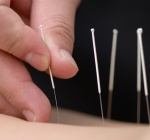
Acupuncture
Last, and maybe the most interesting of all, is acupuncture which studies are now finding to be effective in the treatment of a whole slew of psychiatric disorders, including PTSD, mood disorders like major depression, anxiety and panic disorders, insomnia, chronic fatigue, cognitive dysfunction, anhedonia, addiction, and psychosomatic disorders, just to name a few (American Academy of Medical Acupuncture; Chen; Jalynytchev and Jalynytchev; Luo, Zhang, and Lai; Moss; Tiedmann) While acupuncture has been around for over 2,000 years and always been respected within Eastern medicine, it’s only recently gaining respect in Western medicine, too, now that research has started to provide a scientific foundation for its efficacy in treating specific physical and mental illnesses. With recent findings, scientists now believe that “needling the acupuncture points stimulates the nervous system to release chemicals in the muscles, spinal cord, and brain, [which…] either change the experience of pain, or […] trigger the release of other chemicals and hormones which influence the body’s own internal regulating system, [and that, further, the] improved energy and biochemical balance produced by acupuncture results in stimulating the body’s natural healing abilities, and in promoting physical and emotional well-being” (American Academy of Medical Acupuncture). Several studies have been conducted on the use of acupuncture to treat major depressive disorder (MDD) and have concluded that acupuncture was equally effective in the reduction of depressive symptoms when compared to treatment with antidepressants, including amitriptyline, fluoxetine, maptrotiline, mianserin, and tamoxifen, having comparable response, remission, and relapse rates across the board. However, the studies found that with the subjects that had received acupuncture instead of pharmacotherapy, “[change in anxiety somatization was significant]” (Jalynytchev and Jalynytchev). However, in another study, the findings concluded that “[the] cured and markedly effective rate of 72.7% (24/33) in [the] acupuncture group was [not only equal to pharmacotherapy, but was actually superior] to that of 46.8% (15/32) in [the] western medication group, [which was being treated with trazedone]; after treatment, the scores of all items and the total cumulative scores of PSQI and SDS of both groups were reduced […], of which, the sleep quality and daytime function evaluation in [the] acupuncture group reduced more obviously than those in [the] western medication group” (Luo, Zhang and Lai). In other words, the acupuncture was a superior treatment to pharmacotherapy with a plethora of psychotropic medications being tested between these multiple studies combined, with acupuncture having more benefits in symptom reduction. Other recent research on acupuncture “[…] found that cerebral serotonin [had] anti-depressant and analgesic effects [and it has been] reported that cerebral serotonin can be released by the stimulation of certain acupuncture loci, [specifically numbers ST36 and GB20],” so it’s no surprise that this, combined with the endorphins, which have the effect of euphoric feelings in the person and which are also released during acupuncture treatments, results in the studies finding acupuncture to be effective in treating depression, anxiety, insomnia, and other stress-related mental and psychosomatic disorders (Chen). Last, acupuncture has shown great promise in treating patients suffering from addiction disorders. In a study conducted by Yale University, auricular acupuncture was determined to significantly improve rehabilitation rates in cocaine addicts, and in clinical notes from 52 case studies on its efficacy in smoking cessation, it was also determined to be effective (Avants, Margolin, and Holford; Li). In fact, in an article published by Vanderbilt University, it’s noted that “Many courts in the United States are adopting acupuncture as a means of treating addictions [now]” (Washington). The article goes on to specify that “[in Tennessee, the] Shelby County Criminal Court adopted acupuncture and reported that acupuncture helped many addicts, by reducing their urges and cravings for drugs [and that studies] in Florida and California found that first time drug offenders that were treated with acupuncture ‘had only a 3% recidivism rate’ […and were also] less violent” (Washington). Acupuncture was even found to “[prevent] seizure in alcoholic and benzodiazepine patients” during their withdrawal (Brumbaugh). Additionally, once again, just like all of the preceding alternative treatment options discussed, acupuncture also has a very low side-effect profile compared to the overwhelming list of side-effects that come along with the mediocre benefits that psychiatric medications offer.
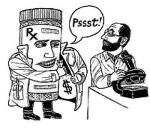 Additional Concerns Regarding Treatment Practices
Additional Concerns Regarding Treatment Practices
In addition to the alternative treatments that we have covered so far, there are countless others that remain hidden from the public and, despite their higher efficacy rates in treating innumerable psychiatric disorders, continue to be underutilized or omitted altogether most of the time due to unqualified practitioners stepping over proper treatment boundaries, pharmaceutical industry corruption and lies, dishonest and unethical research publishing, insurance companies stepping over their ethical boundaries in deciding treatment for patients instead of merely covering treatments (which is all their trained to do at best), and patient’s being left completely unaware of their actual options and the true facts of what really works and of the real risks involved with each option.
 One may wonder, after being confronted with the overabundance of such facts, why it is that these alternative treatments are still not standard care and rarely even mentioned to patients as an option when there are so many reasons to find them significantly preferable to pharmaceuticals. Especially when there are countless people affected by mental illnesses just in our own country alone, from the individuals suffering from psychiatric disorders themselves, their family and friends, providers, insurance companies, and even the other citizens and government of the country who are indirectly impacted by the ongoing costs of healthcare and disability for which these patients require public assistance. It essentially takes a toll on everyone, whether at a primary, secondary, or tertiary level. Why would these options, after all of this research pointing in their direction, still be so difficult to access in a developed, industrialized country like ours? There are multiple causes to this prevailing problem.
One may wonder, after being confronted with the overabundance of such facts, why it is that these alternative treatments are still not standard care and rarely even mentioned to patients as an option when there are so many reasons to find them significantly preferable to pharmaceuticals. Especially when there are countless people affected by mental illnesses just in our own country alone, from the individuals suffering from psychiatric disorders themselves, their family and friends, providers, insurance companies, and even the other citizens and government of the country who are indirectly impacted by the ongoing costs of healthcare and disability for which these patients require public assistance. It essentially takes a toll on everyone, whether at a primary, secondary, or tertiary level. Why would these options, after all of this research pointing in their direction, still be so difficult to access in a developed, industrialized country like ours? There are multiple causes to this prevailing problem.
 Corporate Greed Over Patients’ Best Interests
Corporate Greed Over Patients’ Best Interests
First, and the biggest hurdle to get around, is good old-fashioned corporate greed. The pharmaceutical companies are making money hand over fist on pushing their pills and they don’t want to stop. The American Psychological Association (APA) reported on this issue, stating that “The pharmaceutical industry has been very successful in marketing psychotropic drugs to physicians and the public. From 1996 to 2005, the drug industry [tripled] its spending on marketing, including [a fivefold increase in direct-to-consumer advertising; and what’s worse is that several] studies have found that prescription drug ads [don’t adequately explain side effects] and can [adversely affect decisions by patients and doctors]” (Smith). It’s been noted in a publication by the APA that one study revealed “American patients were more than twice as likely to request advertised drugs [as] patients in Canada, where most direct-to-consumer advertising is prohibited (Canadian Medical Association Journal, 2003),” and that “Patients who requested advertised drugs were nearly 17 times more likely to receive one or more new prescriptions than patients who did not request any drugs. The Pharmaceutical Research and Manufacturers of America [try to say that] the ads help educate patients about treatment options, [but The American Psychiatric Association’s communications office declined to comment about issues related to inappropriate prescribing or the potential ethical problems for psychiatrists who are paid by pharmaceutical companies to promote certain drugs through speaking or consulting fees]” (Smith). The invasive, interfering, and downright destructive practices of the pharmaceutical companies, which they try to camouflage by referring to them as so-called marketing strategies, has given way to providers even using these high-risk-to-benefit ratio pharmaceutical options in ways that are not even approved by the FDA. Practitioners are legally allowed to make such decisions on a case-by-case basis, but pharmaceutical companies are strictly forbidden from encouraging, promoting, or offering incentives to providers for using their drugs for off-label treatment, which they have done anyway due to their unquenchable greed, and it has resulted in several drug companies “[…paying] settlements totaling billions of dollars for prohibited off-label marketing of their drugs, including antidepressants and antipsychotics” (Smith).

Unethical Publishing & Marketing Practices
To make matters worse, there is a great skewing in the public’s perception of pharmacotherapy because there is great imbalance in the way scientific findings are made public. Industry-sponsored clinical trials are being reported in a misleading and unethical manner at this point in time. The New England Journal of Medicine published the findings of a meta-analysis reviewing 74 FDA-registered studies testing efficacy of antidepressants. The researchers concluded that “[among the] 74 FDA-registered studies [they reviewed, …whether] and how the studies were published were associated with the study outcome [because a] total of 37 studies viewed by the FDA as having positive results were published, [with only] 1 study [that was] viewed as [having] positive [findings was left unpublished], [yet all of the studies that were] viewed by the FDA as having [negative or questionable results…], [excluding] 3 exceptions, [were] either [not published](22 studies) or [published in a way that…misleadingly and deceptively] conveyed a positive outcome (11 studies)” to readers (Turner et al.). The unfairly biased publishing of the research on efficacy rates of antidepressants, which was giving incredibly inaccurate messages to the public, “[…made it appear as though] 94% of the trials conducted were positive,” when the truth was that only about half of the studies showed positive results in pharmacotherapy with antidepressants (Turner et al.). At the conclusion of their meta-analysis on this subject, the researchers asserted that “Selective reporting of clinical trial results may have adverse consequences for researchers, study participants, health care professionals, and patients,” which is exactly correct (Turner et al.). With these kinds of unethical practices, which are not limited to antidepressants alone, it’s easy to see how, “[in] 2010, Americans spent more than $16 billion on antipsychotics, $11 billion on antidepressants and $7 billion for drugs to treat attention-deficit hyperactivity disorder (ADHD),” and those figures were just for those three small categories of drugs, not even the industry as a whole (Smith). With the “[…] growing body of research [suggesting] that antidepressants aren’t as effective as many people believe, [that an] analysis of all FDA clinical trials for four SSRI antidepressants found that the drugs [didn’t even perform significantly better than placebos] in treating mild or moderate depression, and [that] the benefits of the drugs were ‘relatively small even for severely depressed patients,’” why, then, are we still spending over $11 billion on antidepressants when there is literature for more effective treatments? (Kirsch et al.; Smith). Couple this with the side-effects and one has to ask if the potential, but maybe not even legitimate, benefits of such drugs are worth the risk involved. This problem certainly goes beyond antidepressants alone, being widespread throughout psychotropic medications of all kinds, and the state of matters right now should enrage the unwitting public.
 Profits Prioritized Over Public Health
Profits Prioritized Over Public Health
In an article published by Harvard Business School, it was reported that “In 2010, total prescription drug sales [exceeded $250 billion, some 30-35 percent of the global total of $850 billion]” (Daemmrich). It should also be noted that “Despite its [larger population] and [more encompassing insurance coverage], Europe’s share of global pharmaceutical sales was [still ten percent less than that of the United States, and the difference is largely explained by higher drug prices]; for many of the top-selling drugs, the U.S. wholesale price was between [two and three times as high] as in Germany or the United Kingdom, and consumers (or their insurer) paid retail prices between [two and four times as high] as in other countries. Thus, even though the number of prescriptions filled annually in Canada (an average of 14 per person) and the United Kingdom (an average of 15 per person) exceed the United States (an average of 12 per person), international pharmaceutical firms are drawn to the U.S. market” (Daemmrich). Again, the simple term for this is corporate greed, and these pharmaceutical industry predators accomplish their agenda by inundating the general public with television commercials aimed directly at them, as well as biased publishing of scientific findings, to sell each individual prescription medication on the market. This has led to patients just wanting a “magical pill” that will easily fix all their problems. However, this “easy fix,” so to speak, is rarely the case when they’re faced with reality and, while it may serve as a “catalyst helping [some] to be able to pursue recovery goals; for many others it has resulted in more problems than benefits,” and oftentimes pharmacotherapy isn’t “[the safest or even the most effective route]” of treatment when all is said and done (CSPNJ; Smith).
 Insurance Companies Contribution to the Problems
Insurance Companies Contribution to the Problems
As mentioned before, the insurance company reimbursement policies greatly contribute to this ongoing problem. We touched on how they either don’t cover alternative treatments at all, or penalize patients and practitioners for choosing such options with their much lower rates of reimbursement, creating a huge financial burden on patients and discouraging practitioners, as well, financially even though the alternative treatments themselves aren’t as expensive as their psychotropic medication counterparts. The insurance companies are consistently dictating what kind of care American patients receive instead of leaving it up to the patient and, more importantly, the provider who actually has a medical degree and the proper training to determine what treatments are appropriate for certain illnesses and disorders. While insurance companies might try to argue that limiting benefits keeps costs down, they actually end up dishing out more money in payments for psychiatric medication due to the fact that this treatment option is an ongoing cost to both the patient and the insurance company since discontinuation of pharmacotherapy is more likely to result in relapse, whereas alternative treatments are usually not ongoing since they have lasting effects and work toward curing illness rather than masking it.
 Practitioners Practicing & Prescribing Outside of Scope of Their Training & Expertise: The Implications on Public Health, Wellbeing, & Safety
Practitioners Practicing & Prescribing Outside of Scope of Their Training & Expertise: The Implications on Public Health, Wellbeing, & Safety
This leads us to another problem that needs to be addressed in mental healthcare, which is that a very large part of the problem is caused by the fact that the majority of psychotropic medications are prescribed by general practitioners who have, at best, limited training in mental health care at all. That’s right- you didn’t misread it. General practitioners are prescribing more psychiatric medications than psychiatrists and other mental health care providers combined. This is particularly disturbing given that primary care physicians “typically [only] have a four- to eight-week clerkship in psychiatry during medical school,” (Yates et al.). In fact, as pointed out in an article that was recently published by Psychology Today, “much of their psychiatric education is delivered by pharmaceutical representatives,” which is obviously a flawed idea given there is such a conflict of interest, including that those representatives have never even gotten the pathetic amount of education that the general doctors have with regard to mental healthcare and, worse, that the information they do promote is completely biased and based on (you got it) corporate greed (Dunckley). Yet, despite their inadequate training in the diagnosis or treatment of psychiatric disorders, general practitioners prescribe these medications far more often than their adequately educated counterparts in the mental healthcare field. “[One] in three visits to primary care are for psychiatric related complaints,” and even though general practitioners lack the expertise to provide proper care for these patients, nearly 80% of all psychotropic medications are prescribed by general practitioners, rather than psychiatrists (Dunkley; Mark, Levit, and Buck). Does anyone else find this quite disturbing?
 While some argue that allowing general practitioners to treat mental health disorders improves access to treatment overall, these general, doctors who aren’t adequately educated, trained, or specialized simply cannot maintain standard of care in this area of healthcare because they do not know the research on mental health disorders, treatment, or related issues, including efficacy rates of various treatments for specific psychiatric disorders. That is why an article published by the APA noted that “[…according to a study last year by the Centers for Disease Control and Prevention (CDC),] patients [often receive psychotropic medications] without [ever] being evaluated by a mental health professional,” instead of being informed of alternative treatment options that are almost always safer and may have higher rates of symptom reduction and remission, as well as lower rates of relapse (Smith). The article goes on to highlight that “[when] Americans visit their primary-care physicians and […] walk away with a prescription for an antidepressant or other drugs, [they do so] without [ever] being aware of other evidence-based treatments […] that might work better for them without the risk of side effects” (Smith). This doesn’t even address the fact that when these practitioners are completely uneducated on mental disorders, their misunderstanding leads them to think and then make very dangerous remarks to patients that could push one over the edge if they were already suicidal. This is an extremely perilous position to put already vulnerable mental health patients in as they seek help for their diseases. This is simply unacceptable, especially as a standard, common practice. Americans deserve better than this.
While some argue that allowing general practitioners to treat mental health disorders improves access to treatment overall, these general, doctors who aren’t adequately educated, trained, or specialized simply cannot maintain standard of care in this area of healthcare because they do not know the research on mental health disorders, treatment, or related issues, including efficacy rates of various treatments for specific psychiatric disorders. That is why an article published by the APA noted that “[…according to a study last year by the Centers for Disease Control and Prevention (CDC),] patients [often receive psychotropic medications] without [ever] being evaluated by a mental health professional,” instead of being informed of alternative treatment options that are almost always safer and may have higher rates of symptom reduction and remission, as well as lower rates of relapse (Smith). The article goes on to highlight that “[when] Americans visit their primary-care physicians and […] walk away with a prescription for an antidepressant or other drugs, [they do so] without [ever] being aware of other evidence-based treatments […] that might work better for them without the risk of side effects” (Smith). This doesn’t even address the fact that when these practitioners are completely uneducated on mental disorders, their misunderstanding leads them to think and then make very dangerous remarks to patients that could push one over the edge if they were already suicidal. This is an extremely perilous position to put already vulnerable mental health patients in as they seek help for their diseases. This is simply unacceptable, especially as a standard, common practice. Americans deserve better than this.
 Controversy on Existence of Problems At All
Controversy on Existence of Problems At All
The last contributing factor to this ongoing battle to provide mental health patients with quality care by utilizing alternative methods is the fact that there isn’t even agreement over whether the problem exists or not since, as we already discussed, there are both general doctors, as well as patients, who have never even had the opportunity to be educated on the other treatments and their efficacy rates. There are also those Western medical doctors that just refuse to believe that any other kind of treatment can work if it doesn’t fall inside the very strict boundaries of Western treatments. This, once again, is just lack of education on the subject. These are the people who will argue that pharmacotherapy is sufficient, superior, quicker, and/or cheaper in comparison to alternative treatments. In fairness, sometimes psychotropic medications may be sufficient. In fact, sometimes, they might even be a necessary element to a patient’s treatment plan, depending on specific circumstances, the exact diagnosis, and the cause of the disorder. It’s also true that from the patients’ perspective, whose insurance company will cover prescriptions, but not other modes of treatment, or only covers them at lower coverage rates and limited numbers of times, that pharmaceuticals are often a lower out-of-pocket cost. However, we have already covered why in most cases that all of those arguments are, at best, weak and sometimes completely inaccurate altogether when one looks at all the research and facts, and the insurance company policies just need to be changed.

The Problem Impacts Everyone in Society: The Primary, Secondary, & Tertiary Effects
Since this issue affects almost everyone within our society, from the patients at the primary level, to providers, family members, and friends at the secondary level, and at the tertiary level, the government and tax payers who subsidize the cost of those on disability from inadequate care, as well as insurance companies who end up spending more on ongoing care, rather than just covering more effective treatments, it makes sense to not only propose solutions, but to follow through on implementing them to correct the problem. And everyone can be involved in helping to make a difference and changing things for the better of all that are impacted by this urgent dilemma we face in America.

What Patients Can Do…
Unfortunately, patients cannot rely on the pharmaceutical companies to be ethical or honest, the insurance companies to stick to what they know and just cover treatments fairly instead of dictate treatment in which they have no expertise, or even on their own healthcare providers at this point. In fact, they can’t even trust that research is being published without bias now since the pharmaceutical industry has its corrupt hand dipped into that, too, and has already been caught with its pants down by printing studies in misleading and deceptive ways. As the NIMH researchers reported, “[…] prevailing patterns of mental health care are poor” (Wang et al.). It’s a lugubrious and completely unfair position that the medical field as a whole has left mental health patients in, but it is what it is, and now they must be proactive and take responsibility for their own healthcare needs. Patients can make a difference by doing their own research, doing the necessary background checks in seeking out properly qualified and educated providers, going to mental healthcare specialists instead of general practitioners, avoiding practitioners who strictly practice pharmacotherapy and ignore alternative treatments, especially those who have integrative, holistic, naturopathic, osteopathic, or Eastern medicine approaches, and by simply accepting that usually what is easy isn’t what’s best.

Provider Obligations from an Ethical Standpoint
Providers have a responsibility to not treat without the boundaries of their specialty and, further, to keep up on current research findings no matter how busy they are because this is people’s health and literally even their lives on the line. They have an additional obligation to thoroughly educate their patients on all of the treatment options available to them, including each treatment’s rates of remission, relapse, and overall efficacy. Additionally, practitioners should work with their patients in deciding how to treat their disorders, including listening to how the patients feel about the various treatment options. In fact, when providers actively listen to their patients and work with them as a team, this increases success rates with regard to helping the patient reach full remission and maintain lower risks of relapse.
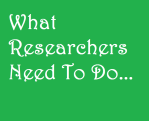 Researchers’ Obligations from an Ethical Standpoint
Researchers’ Obligations from an Ethical Standpoint
Researchers should conduct double blind studies to eliminate promoting biased outcomes and pharmaceutical companies should be barred from involvement in how these studies are conducted, how the results are published, or anything else that presents a conflict of interest. More research needs to be conducted on all the other treatments besides psychiatric medications and the findings need to be published regardless of what the outcomes are in a very forthright and easy to understand manner.
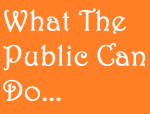
What the General Public Can Do to Help
The general public as a whole can also make a difference by writing letters to providers, insurance companies, politicians, the AMA, APA, and other agencies overseeing mental healthcare, as well as by starting petitions, protesting through peaceful assembly at pharmaceutical companies and the AMA, voting when the opportunity arises with regard to prescribing rights, refusing to buy products from companies that refuse to help correct all of the aforementioned concerns, and advocate in general for all treatment options to utilized and easily accessible to patients. Individuals can also simply raise awareness about this issue by talking to other members of the community about it.
 Governing Agencies Need to Step Up & Have an Ethical Duty to Do So
Governing Agencies Need to Step Up & Have an Ethical Duty to Do So
Last, we can help improve things by addressing prescribing rights. In an article published by the APA in the Monitor on Psychology, it’s noted that “[psychotropic] drugs are valuable tools in treating many mental health disorders, but [inappropriate prescribing can cause serious harm]” (Smith). Since there is so much at stake, it makes no sense to have anyone who is not specifically trained in mental healthcare treating mental health patients. The government needs to pass a law, the AMA (American Medical Association) needs to back off and quit interfering in the attempts that are being made by the educated practitioners and governing agencies in this specialized area of healthcare that are involved in trying to correct this huge problem that puts so many people at risk. The APA should continue their efforts to ensure only properly trained practitioners are legally allowed to assess, diagnose, and treat psychiatric disorders. The most educated professionals in this field are working to expand prescribing privileges to psychologists, who are far more equipped and competent than general practitioners in this arena. Supporters realize that this would substantially reduce inappropriate prescribing and know that with the right to prescribe also comes “[…]the right to unprescribe,” as Elaine Levine, PhD, a prescribing psychologist who teaches psychopharmacology courses at New Mexico State University, so poignantly puts it (Smith). She goes on to explain that “We have to recognize there are times when psychotropic drugs can be life-saving and very helpful. We need to be able to use them to really help people and minimize the overuse of medications,” but she also notes that options such as psychotherapy and other alternative approaches would be utilized much more frequently (Smith). These types of rights have already been established in a handful of states, as well as the U.S. Public Health Services and armed forces, but the AMA and medical doctors are one major force standing in the way and trying to maintain all prescribing rights exclusively in an attempt to control everything and keep profits from these unethical practices high for themselves, even if it’s not what’s in the patients’ best interest. They might argue that psychologists don’t have adequate training, but the fact of the matter is psychologists have considerably more knowledge about how to asses, diagnose, and treat mental health patients than general practitioners and can give adequate care to their patients just as effectively as psychiatrists because of their extensive training in mental health. Opponents, who are really just driven by the money they’ll lose, argue that psychologists could endanger their patients’ safety if granted prescribing authority, but “[…] there is no evidence to support these concerns” (Smith). In fact, the states and agencies that have already implemented these programs have had very positive results. If the agencies involved in this dispute currently, combined with all the practitioners, were to work together to accomplish this, the vast majority of the problem would be solved immediately. The Monitor on Psychology already announced in a recently published article that “[to] help address [the many related concerns (which we have discussed so far), the] APA is developing clinical treatment guidelines that will help [educate physicians, health insurers, and the public] about the [best treatments] available for common mental health disorders” (Smith). The APA also goes on record of being in support of a more integrative, holistic, personalized approach to care, which is imperative. What works for one patient may not work for the next, and what works for one type of psychiatric disorder may not work for all of them. Each patient needs and deserves to have individualized, very personalized treatment plans developed specifically for them as a unique individual after having an extensive intake interview and comprehensive health history taken by a provider with the proper expertise in mental healthcare. This cookie-cutter approach is not sufficient, nor is it ethical. If a patient is seeking mental health care, they need to be referred to a specialist who actually has adequate training in this field. Someone who has not only read the research, but understands it and knows exactly which treatments are best suited for which disorders. Anything less is nothing short of malpractice. I think that in addition to the APA developing clinical treatment guidelines to ensure standard of care within the field, our entire system needs to find a way to bridge the gap between Western medicine and alternative treatments because alternative treatments often offer equal or superior results in the treatment of psychiatric disorders and they almost always come with no to very low side-effect profiles, especially when compared to their pharmaceutical counterparts, which in general come with many side-effects, ranging from mild to extremely severe, and some even carrying the risk of death. This will require the cooperation of everyone involved. The bottom line is that we must address these issues at every level, as outlined, in order to correct the pandemic issue of inadequate care that mental health patients are receiving on a regular basis. It’s time to do something and put it to an end once and for all.
Works Cited
Al-Harbi, Kahlid Saad. “Treatment-resistant depression: therapeutic trends, challenges, and future directions.” Patient Preference And Adherence 6 (2012): 369-388. Web. 11 February 2013. <http://web.ebscohost.com.ezproxy.bellevuecollege.edu/ehost/detail?vid=3&sid=0b4d66dd-0a70-4b7f-bce2-ad28072126f7%40sessionmgr4&hid=24&bdata=JnNpdGU9ZWhvc3QtbGl2ZQ%3d%3d#db=cmedm&AN=22654508>.
American Academy of Medical Acupuncture. “”DOCTOR, WHAT’S THIS ACUPUNCTURE ALL ABOUT?”.” 2006. American Academy of Medical Acupuncture. Web. 11 March 2013. <http://www.medicalacupuncture.org/acu_info/articles/aboutacupuncture.html>.
American Psychiatric Association. Diagnostic and Statistical Manual of Mental Disorders, Forth Edition, Text Revision. Washington, DC: American Psychiatric Association, 2000.
Avants, S. Kelly, et al. “A Randomized Controlled Trial of Auricular Acupuncture for Cocaine Dependence.” Archives of Internal Medicine 160.15 (2000): 2305-2312. Web. 12 March 2013. <http://archinte.jamanetwork.com/article.aspx?articleid=746723>.
Brown, Amanda P., Andre Marquis and Douglas A. Guiffrida. “Mindfulness-Based Interventions in Counseling. .” Journal of Counseling & Development 91.1 (2013): 96-104. Web. 10 March 2013. <http://web.ebscohost.com.ezproxy.bellevuecollege.edu/ehost/detail?sid=a91aa82b-5cdd-4c48-abad-acee0f673c98%40sessionmgr11&vid=1&hid=20&bdata=JnNpdGU9ZWhvc3QtbGl2ZQ%3d%3d#db=a9h&AN=84696464>.
Brumbaugh, Alex. “The Acupuncture-Adenosine Connection: Implications for Addiction Treatment and Research.” Stillpoint Press of Santa Barbara June 2010. Web. 12 March 2013. <http://www.stillpointpress.com/Acupuncture-Adenosine.htm>.
Büssing, Arndt, et al. “Effects of Yoga on Mental and Physical Health: A Short Summary of Reviews.” Evidence-Based Complementary and Alternative Medicine (2012). Web. 10 March 2013. <http://www.ncbi.nlm.nih.gov/pmc/articles/PMC3447533/>.
Chen, A. “An Introduction to Sequential Electric Acupuncture (SEA) in the Treatment of Stress Related Physical and Mental Disorders.” Acupuncture & Electro-Therapeutics Research 17 (1992): 273-83. Web. 12 March 2013. <http://www.biomedsearch.com/nih/introduction-to-sequential-electric-acupuncture/1362037.html>.
Chien, Wai Tong and Isabella Y. M. Lee. “The Mindfulness-Based Psychoeducation Program for Chinese Patients With Schizophrenia.” Psychiatric Services (2013). Web. 20 February 2013. <http://ps.psychiatryonline.org/article.aspx?articleID=1653271>.
Citizens Commission on Human Rights International (CCHR). “Psychiatric Drugs—Just the Facts.” 2013. Citizens Commission on Human Rights International. Web. 12 March 2013. <http://www.cchrint.org/psychiatric-drugs/>.
Collaborative Support Programs of New Jersey (CSPNJ). “Medication Optimization.” Position Paper. 2012. Web. 20 February 2013. <1. http://cspnj.org/attachments/article/194/Medication%20position%20paper%20FINAL%20edition%201-25-2012.pdf>.
Comer, Ronald J. Fundamentals of Abnormal Psychology. Sixth. New York: Worth Publishers, 2011. Print.
CSPNJ (Collaborative Support Programs of New Jersey). “Collaborative Support Programs of New Jersey Position Paper- Medication Optimization.” 10 February 2012. CSPNJ: Collaborative Support Programs of New Jersey. Web. 12 March 2013. <http://www.google.com/url?sa=t&rct=j&q=&esrc=s&frm=1&source=web&cd=1&sqi=2&ved=0CDIQFjAA&url=http%3A%2F%2Fcspnj.org%2Fattachments%2Farticle%2F194%2FMedication%2520position%2520paper%2520FINAL%2520edition%25201-25-2012.pdf&ei=W8w_UYbMLYv2qwGhxIDwDw&usg=AFQ>.
Daemmrich, Arthur. “U.S. Healthcare Reform and the Pharmaceutical Industry.” 14 September 2011. Harvard Business School. Web. 12 March 2013. <http://www.hbs.edu/faculty/Publication%20Files/12-015.pdf>.
Dayton, Lily. “Mind & Body: Healing Senses: New Approaches to Psychotherapy Stress that the Treatment Process Should Go Beyond Traditional Talk Sessions and Consider the Physical State of Our Bodies.” Los Angeles Times 29 September 2012: E-6. Web. 11 February 2013. <http://search.proquest.com/docview/1081002879/fulltext?accountid=35840>.
—. “MIND & BODY; Healing senses; New approaches to psychotherapy stress that the treatment process should go beyond traditional talk sessions and consider the physical state of our bodies.” Los Angeles Times 29 September 2012: E-6. Web. 11 February 2013. <http://search.proquest.com.ezproxy.bellevuecollege.edu/docview/1081002879/abstract?source=fedsrch&accountid=35840>.
Dunckley, Victoria L. “A Dangerous Game: GPs Prescribing Psychotropics.” Psychology Today (2013). Web. 12 March 2013. <http://www.psychologytoday.com/blog/mental-wealth/201303/dangerous-game-gps-prescribing-psychotropics>.
Eyre, H.A., E. Papps and B.T. Baune. “Treating depression and depression-like behavior with physical activity: an immune perspective.” Frontiers In Psychiatry / Frontiers Research Foundation 4.3 (2013). Web. 11 February 2013. <http://www.ncbi.nlm.nih.gov/pmc/articles/PMC3562851/>.
Faghri, Nahid M. Abed, Charles M. Boisvert and Sanaz Faghri. “Understanding the expanding role of primary care physicians (PCPs) to primary psychiatric care physicians (PPCPs): enhancing the assessment and treatment of psychiatric conditions.” Mental Health in Family Medicine 7.1 (2010): 17-25. Web. 20 February 2013 . <http://www.ncbi.nlm.nih.gov/pmc/articles/PMC2925161/>.
Fairfax, Hamilton. “The Use of Mindfulness in Obsessive Compulsive Disorder: Suggestions for its Application and Integration in Existing Treatment.” Clinical Psychology & Psychotherapy 15.1 (2008): 53–59. Web. 10 March 2013. <http://onlinelibrary.wiley.com/doi/10.1002/cpp.557/abstract>.
Goodman, Rachael D. and Angela M. Calderon. “The Use of Mindfulness in Trauma Counseling.” Journal of Mental Health Counseling 34.3 (2012): 254-268. Web. 11 February 2013. <http://search.proquest.com.ezproxy.bellevuecollege.edu/docview/1027919918/fulltext?accountid=35840>.
Goodman, Rachel D. and Angela M. Calderon. “The Use of Mindfulness is Trauma Counseling.” The Journal of Mental Health Counseling 34.3 (2012): p254-268. Web. 10 March 2013. <http://web.ebscohost.com.ezproxy.bellevuecollege.edu/ehost/detail?sid=5c918832-0d0d-4560-a78a-6d191bac700a%40sessionmgr10&vid=1&hid=20&bdata=JnNpdGU9ZWhvc3QtbGl2ZQ%3d%3d#db=pbh&AN=78296871>.
Grilo, Carlos M., Robin M. Masheb and G. Terence Wilson. “Efficacy of Cognitive Behavioral Therapy and Fluoxetine for the Treatment of Binge Eating Disorder: A Randomized Double-Blind Placebo-Controlled Comparison.” Biological Psychiatry 57.3 (2005): 301-309. Web. 8 March 2013. <http://web.ebscohost.com.ezproxy.bellevuecollege.edu/ehost/detail?sid=3ddbc721-9b7f-49bb-a510-97bb31f7264d%40sessionmgr14&vid=1&hid=20&bdata=JnNpdGU9ZWhvc3QtbGl2ZQ%3d%3d#db=a9h&AN=16291142>.
Harman, Jeffrey S., Mark J. Edlund and John C. Fortney. “Trends in Antidepressant Utilization From 2001 to 2004.” Psychiatric Services 60.5 (2009). Web. 20 February 2013. <http://ps.psychiatryonline.org/article.aspx?articleid=100405>.
Harpaz-Rotem, Ilan, et al. “Pharmacologic Treatment of Posttraumatic Stress Disorder Among Privately Insured Americans.” Psychiatric Services 59.10 (2008). Web. 20 February 2013. <http://ps.psychiatryonline.org/article.aspx?articleid=99815>.
Haug, Tone Tangen, et al. “Exposure Therapy and Sertraline in Social Phobia: 1-Year Follow-Up of a Randomised Controlled Trial.” The British Journal of Psychiatry 182 (2003): 312-318. Web. 9 March 2013. <http://bjp.rcpsych.org/content/182/4/312.short>.
Hollon, Steven D., et al. “Prevention of Relapse Following Cognitive Therapy vs Medications in Moderate to Severe Depression.” Archives of General Psychiatry 62.4 (2005): 417-422. Web. 8 March 2013. <http://archpsyc.jamanetwork.com/article.aspx?articleid=208447>.
Jalynytchev, Pavel and Valentina Jalynytchev. “Role of Acupuncture in the Treatment of Depression: Benefits and Limitations of Adjunctive Treatment and Monotherapy.” The Psychiatric Times 26.6 (2009). Web. 12 March 2013. <http://www.psychiatrictimes.com/print/article/10168/1413274>.
Jurado, Adrienne. “7 Reasons Why Yogis Are Happier People.” Mind Body Green: Your Guide to Wellness 4 March 2013. Web. 11 March 2013. <http://www.mindbodygreen.com/0-7921/7-reasons-why-yogis-are-happier-people.html?utm_source=feedburner&utm_medium=feed&utm_campaign=Feed%3A+mindbodygreen+%28MindBodyGreen%29>.
Kenny, M.A. and J.M.G. Williams. “Treatment-Resistant Depressed Patients Show a Good Response to Mindfulness-Based Cognitive Therapy.” Behaviour Research and Therapy 45.3 (2007): 617–625. Web. 10 March 2013. <http://www.sciencedirect.com/science/article/pii/S0005796706000994>.
Kessler, R.C., et al. “Prevalence, severity, and comorbidity of 12-month DSM-IV disorders in the National Comorbidity Survey Replication.” Archives of General Psychiatry 62.6 (2005): 617-627. Web. 20 February 2013. <http://archpsyc.jamanetwork.com/article.aspx?articleid=208671>.
Khalsa, S.B.; Khalsa, G.S.; Khalsa, H.K.; Khalsa, M.K., Division of Sleep Medicine, Department of Medicine, Brigham and Women’s Hospital, Harvard Medical School. “Evaluation of a Residential Kundalini Yoga Lifestyle Pilot Program for Addiction in India.” Journal of Ethnicity in Substance Abuse 7.1 (2008): 67-79. Web. 10 March 2013. <http://www.ncbi.nlm.nih.gov/pubmed/19842301>.
Kirsch, Irving, et al. “Initial Severity and Antidepressant Benefits: A Meta-Analysis of Data Submitted to the Food and Drug Administration.” PLOS Medicine: Clinical Trials (2008). Web. 12 March 2013. <http://www.plosmedicine.org/article/info:doi/10.1371/journal.pmed.0050045>.
Koerner, Kelly and Marsha M. Linehan. “Research on Dialectical Behavior Therapy for patients with Borderline Personality Disorder.” Psychiatric Clinics of North America 23.1 (2000): 151–167. Web. 9 March 2013. <http://www.sciencedirect.com/science/article/pii/S0193953X05701490>.
Li, Linling. “Acupuncture Treatment for Smoking Addiction.” 11 March 2011. AcuHealing. Web. 12 March 2013. <http://www.acuhealing.com/clinicreports/smoking.htm>.
Linehan, Marsha. “Dialectical Behavior Therapy (DBT) for Borderline Personality Disorder.” The Journal of the NAMI California 8.1 (2003). Web. 9 March 2013. <http://www.dbtselfhelp.com/html/linehan_dbt.html>.
Luo, W.Z., Q.Z. Zhang and X.S. Lai. “Effect of Acupuncture Treatment of Relieving Depression and Regulating Mind on Insomnia Accompanied with Depressive Disorders.” Chinese Acupuncture & Moxibustion 30.11 (2010): 899-903. Web. 12 March 2013. <http://web.ebscohost.com.ezproxy.bellevuecollege.edu/ehost/detail?sid=50133b5b-a80b-4622-886d-f91d96cf9383%40sessionmgr11&vid=1&hid=20&bdata=JnNpdGU9ZWhvc3QtbGl2ZQ%3d%3d#db=cmedm&AN=21246844>.
Mark, Tami L., Katharine R. Levit and Jeffrey A. Buck. “Datapoints: Psychotropic Drug Prescriptions by Medical Specialty.” Psychiatric Services 60.9 (2009). Web. 12 March 2013. <http://ps.psychiatryonline.org/article.aspx?articleID=100738>.
—. “Datapoints: Psychotropic Drug Prescriptions by Medical Specialty.” Psychiatric Services 60.9 (2009). Web. 20 February 2013. <http://ps.psychiatryonline.org/article.aspx?articleid=100738>.
Morina, Naser, et al. “Combining Biofeedback and Narrative Exposure Therapy for Persistent Pain and PTSD in Refugees: A Pilot Study.” European Journal of Psychotraumatology 3.10 (2012). Web. 9 March 2013. <http://www.ncbi.nlm.nih.gov/pmc/articles/PMC3402113/>.
—. “Combining Biofeedback And Narrative Exposure Therapy For Persistent Pain And PTSD In Refugees: A Pilot Study.” European Journal of Psychotraumatology 3 (2012): 1-6. Web. 11 February 2013. <http://web.ebscohost.com.ezproxy.bellevuecollege.edu/ehost/detail?sid=e5461126-8442-43e7-98ea-f54898ce9f58%40sessionmgr12&vid=1&hid=24&bdata=JnNpdGU9ZWhvc3QtbGl2ZQ%3d%3d#db=a9h&AN=80826642>.
Moss, Charles A. “Five Element Acupuncture:Treating Body, Mind, and Spirit.” Alternative Therapies in Health and Medicine 5.5 (1999): 52-61. Web. 12 March 2013. <http://search.proquest.com.ezproxy.bellevuecollege.edu/docview/204814456/abstract?accountid=35840>.
National Institute of Mental Health (NIMH). “Mental Health Medications.” 9 February 2012. National Institute of Mental Health: Transforming the Understanding of Mental Illness and Treatment Through Research. Web. 6 March 2013. <http://www.nimh.nih.gov/health/publications/mental-health-medications/complete-index.shtml>.
—. “The Numbers Count: Mental Disorders in America.” 4 February 2013. National Institute of Mental Health: Transforming the Understanding and Treatment of Mental Illness Through Research. Web. 6 March 2013. <http://www.nimh.nih.gov/health/publications/the-numbers-count-mental-disorders-in-america/index.shtml>.
O’Connor, Lynn E, et al. “Depression, Guilt, and Tibetan Buddhism.” Psychology 3 (2012): 805-809. Web. 11 February 2013. <http://search.proquest.com.ezproxy.bellevuecollege.edu/docview/1124428647/abstract?source=fedsrch&accountid=35840>.
Öst, Lars-Göran. “One-Session Treatment for Specific Phobias.” Behaviour Research and Therapy 27.1 (1989): 1-7. Web. 9 March 2013. <http://www.sciencedirect.com/science/article/pii/0005796789901137>.
Otto, M.W., et al. “A Comparison of the Efficacy of Clonazepam and Cognitive-Behavioral Group Therapy for the Treatment of Social Phobia.” Journal of Anxiety Disorders 14.4 (2000): 345-358. Web. 9 March 2013. <http://www.ncbi.nlm.nih.gov.ezproxy.bellevuecollege.edu/pubmed/11043885?dopt=AbstractPlus#>.
Peterson, Linda Gay and Lori Pbert. “Effectiveness of a Meditation-Based Stress Reduction Program in the Treatment of Anxiety Disorders.” The American Journal of Psychiatry 149.7 (1992): 936-943. Web. 10 March 2013. <http://ajp.psychiatryonline.org/article.aspx?articleID=168746>.
Pettus, Ashley. “Psychiatry by Prescription: Do psychotropic drugs blur the boundaries between illness and health?” Harvard Magazine (2006). Web. 20 February 2013. <http://harvardmagazine.com/2006/07/psychiatry-by-prescripti.html>.
Phillips, Adam. “Doctor Melds Western Practices, Eastern Spirituality.” Voice of America News 29 June 2012. Web. 11 February 2013. <http://search.proquest.com/docview/1022707548/fulltext?accountid=35840>.
—. “Doctor Melds Western Practices, Eastern Spirituality.” 2012. Web. 11 February 2013. <http://search.proquest.com/docview/1022707548?accountid=35840>.
Polak, A.R., et al. “Comparison of the effectiveness of trauma-focused cognitive behavioral therapy and paroxetine treatment in PTSD patients: Design of a randomized controlled trial.” BMC Psychiatry 12 (2012). Web. 11 February 2013. <http://www.ncbi.nlm.nih.gov/pmc/articles/PMC3539952>.
President and Fellows of Harvard College. Division of Sleep Medicine Havard Medical School. 2006. Web. 10 March 2013. <https://sleep.med.harvard.edu/people/faculty/240/sat+bir+singh+khalsa+phd#publications>.
Psychiatric News. “Psychiatrists Write Fewer Than 1 in 4 Psychoactive Prescriptions.” Psychiatric News 44.20 (2009): 10. Web. 20 February 2013 . <http://psychnews.psychiatryonline.org/newsArticle.aspx?articleid=112946>.
Raboni, Mara Regina, Sergio Tufik and Deborah Suchecki. “Treatment of PTSD by Eye Movement Desensitization Reprocessing (EMDR) Improves Sleep Quality, Quality of Life, and Perception of Stress.” Annals of the New York Academy of Sciences 1071: Psychobiology of Posttraumatic Stress Disorder: A Decade of Progress (2006): 508-513. Web. 2009 March 2013. <http://onlinelibrary.wiley.com/doi/10.1111/nyas.2006.1071.issue-1/issuetoc>.
Ryan, Jane. “Yoga for the Mind.” Therapy Today 23.8 (2012): 14-17. Web. 11 February 2013. <http://web.ebscohost.com.ezproxy.bellevuecollege.edu/ehost/detail?sid=c5ea804c-f296-4e89-85c4-f1c409c81266%40sessionmgr4&vid=1&hid=20&bdata=JnNpdGU9ZWhvc3QtbGl2ZQ%3d%3d#db=pbh&AN=82937705>.
Saeed, Sy Atezaz, Diana J. Antonacci and Richard M. Bloch. “Exercise, Yoga, and Meditation for Depressive and Anxiety Disorders.” American Family Physician 81.8 (2010): 981-986. Web. 8 March 2013. <http://www.aafp.org/afp/2010/0415/p981.html>.
Sinyor, Mark, Ayal Schaffer and Anthony Levitt. “The Sequenced Treatment Alternatives to Relieve Depression (STAR*D) Trial: A Review.” Canadian Journal of Psychiatry 55.3 (2010): 126-135. Web. 11 February 2013 . <http://web.ebscohost.com.ezproxy.bellevuecollege.edu/ehost/detail?sid=7f8ba89f-a079-42b8-85d0-9a29d5940cb7%40sessionmgr10&vid=1&hid=24&bdata=JnNpdGU9ZWhvc3QtbGl2ZQ%3d%3d#db=pbh&AN=49163078>.
Smith, Brendan L. “Inappropriate Prescribing: Research shows that all too often, Americans are taking medications that may not work or may be inappropriate for their mental health problems.” Monitor on Psychology 43.6 (2012): 36. Web. 20 February 2013. <http://www.apa.org/monitor/2012/06/prescribing.aspx>.
Steenkamp, J.O., et al. “Introducing SHIP® As A Psychotherapeutic Model To Access The Body Memory Of Traumatised Clients: Depathologising Expressions Of Trauma.” South African Journal Of Psychology 42.2 (2012): 202-213. Web. 11 February 2013. <http://web.ebscohost.com.ezproxy.bellevuecollege.edu/ehost/pdfviewer/pdfviewer?sid=e410aa72-043b-413f-b56e-9c591c36980c%40sessionmgr11&vid=2&hid=24>.
Tan, Chunjiang, Yanbing Wu and Songming Chen. “Chinese Medicine for Mental Disorder and its Applications in Psychosomatic Diseases.” Alternative Therapies in Health and Medicine 19.1 (2013): 59-69. Web. 11 February 2013. <http://search.proquest.com.ezproxy.bellevuecollege.edu/docview/1283786999/abstract?source=fedsrch&accountid=35840>.
The World Health Organization (WHO). The Global Burden of Disease: 2004 Update. Deaths and DALYs 2004: Annex Tables. Geneva, Switzerland, 2004. Web. 20 February 2013. <http://www.who.int/healthinfo/global_burden_disease/GBD_report_2004update_AnnexA.pdf>.
Tiedemann, Stephanie J. “Acupuncture in the Treatment of Depression.” 15 November 2005. Vanderbilt University. Web. 11 March 2013. <http://healthpsych.psy.vanderbilt.edu/AcupunctureDepression.htm>.
Turner, Erick H., et al. “Selective Publication of Antidepressant Trials and Its Influence on Apparent Efficacy.” The New England Journal of Medicine 17 January 2008: 252-260. Web. 12 March 2013. <http://archive.is/udNz>.
Wang, Philip S.; Ulbricht, Christine M.; Schoenbaum, Michael (NIMH’s Division of Services and Intervention Research). “Improving Mental Health Treatments Through Comparative Effectiveness Research.” Health Affairs: At the Intersection of Health, Healthcare, and Policy 28.3 (2009): 783-791 . Web. 14 March 2013. <http://content.healthaffairs.org/content/28/3/783.full>.
Washington, Sheria. “Health Psychology Home Page: Acupuncture and Addictions.” n.d. Vanderbilt University. Web. 12 March 2013. <http://healthpsych.psy.vanderbilt.edu/Acupuncture%20and%20Addictions.htm>.
Williams-Orlando, Carolyn. “Spirituality in Integrative Medicine.” Integrative Medicine 11.4 (2012). Web. 11 February 2013. <http://search.proquest.com.ezproxy.bellevuecollege.edu/docview/1030279691/abstract?source=fedsrch&accountid=35840>.
Yates, Deanna F., et al. “Patient Safety Forum: Should Psychologists Have Prescribing Authority?” Psychiatric Services 55.12 (2004). Web. 12 March 2013. <http://ps.psychiatryonline.org/article.aspx?articleid=89424>.
—. “Patient Safety Forum: Should Psychologists Have Prescribing Authority?” Psychiatric Services 55.12 (2004). Web. 20 February 2013. <http://ps.psychiatryonline.org/article.aspx?articleid=89424>.
Zschucke, Elisabeth, Katharina Gaudlitz and Andreas Ströhle. “Exercise and Physical Activity in Mental Disorders: Clinical and Experimental Evidence.” Journal of Preventive Medicine and Public Health 46.1 (2013). Web. 6 March 2013. <http://synapse.koreamed.org/search.php?where=aview&id=10.3961/jpmph.2013.46.S.S12&code=0056JPMPH&vmode=FULL#B94>.
 Self-care has not been a strong-suit for me in the past and, to be quite honest, is still a skill I am learning to master. I’ve always been more of a maestro at taking care of everyone else around me. While others may be better skilled than I am at this particular endeavor of self-care, I am very proud of how far I have personally come with regard to learning this element of loving myself. Although it takes a conscious effort on my part, these days I usually do pretty well. However, in adjusting to my new life here in in a new town and at a new school, I can see that there is room for improvement still. Yet, I have a lot of faith in my ability to make the adjustments I need to in order to succeed in reaching my goals, both personally and academically.
Self-care has not been a strong-suit for me in the past and, to be quite honest, is still a skill I am learning to master. I’ve always been more of a maestro at taking care of everyone else around me. While others may be better skilled than I am at this particular endeavor of self-care, I am very proud of how far I have personally come with regard to learning this element of loving myself. Although it takes a conscious effort on my part, these days I usually do pretty well. However, in adjusting to my new life here in in a new town and at a new school, I can see that there is room for improvement still. Yet, I have a lot of faith in my ability to make the adjustments I need to in order to succeed in reaching my goals, both personally and academically. I have been responsible with regard to my presence (both physically and mentally) in my classes, studying, and doing my homework in a timely fashion. Likewise, I am financially responsible- what financial problems I do have were created by my ex-husband and I am working toward trying to correct them one day at a time, trying not to let them stress me out too much and keeping everything in perspective. I eat healthy, go to bed at a decent time to get enough sleep, avoid alcohol and drugs, and surround myself with loving, positive people who I can trust, connect with, and feel inspired by when I’m around them. However, the biggest way I take care of myself is through my self-talk and attitude, which I proactively choose every day. Charles R. Swindoll has written about this one thing, which is so crucial, more than once. He writes:
I have been responsible with regard to my presence (both physically and mentally) in my classes, studying, and doing my homework in a timely fashion. Likewise, I am financially responsible- what financial problems I do have were created by my ex-husband and I am working toward trying to correct them one day at a time, trying not to let them stress me out too much and keeping everything in perspective. I eat healthy, go to bed at a decent time to get enough sleep, avoid alcohol and drugs, and surround myself with loving, positive people who I can trust, connect with, and feel inspired by when I’m around them. However, the biggest way I take care of myself is through my self-talk and attitude, which I proactively choose every day. Charles R. Swindoll has written about this one thing, which is so crucial, more than once. He writes: Words can never adequately convey the incredible impact of our attitude toward life. The longer I live the more convinced I become that life is 10 percent what happens to us and 90 percent how we respond to it.
Words can never adequately convey the incredible impact of our attitude toward life. The longer I live the more convinced I become that life is 10 percent what happens to us and 90 percent how we respond to it. successes or failures, fame or pain, what other people think of me or say about me, my circumstances, or my position. Attitude keeps me going or cripples my progress. It alone fuels my fire or assaults my hope. When my attitudes are right, there’s no barrier too high, no valley too deep, no dream too extreme, no challenge too great for me.
successes or failures, fame or pain, what other people think of me or say about me, my circumstances, or my position. Attitude keeps me going or cripples my progress. It alone fuels my fire or assaults my hope. When my attitudes are right, there’s no barrier too high, no valley too deep, no dream too extreme, no challenge too great for me.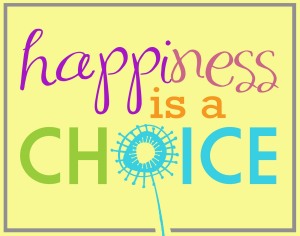 Swindoll also maintains that “The pursuit of happiness is a matter of choice…it is a positive attitude we choose to express. It is not a gift delivered to our door each morning, nor does it come through the window. And it is certain that our circumstances are not the things that make us joyful. If we wait for them to get just right, we will never laugh again” (as cited in Coast, n.d.).
Swindoll also maintains that “The pursuit of happiness is a matter of choice…it is a positive attitude we choose to express. It is not a gift delivered to our door each morning, nor does it come through the window. And it is certain that our circumstances are not the things that make us joyful. If we wait for them to get just right, we will never laugh again” (as cited in Coast, n.d.). I wholeheartedly agree with Swindoll’s assertions and believe the research related to the budding field of positive psychology seems to only bolster his statements. Due to the impact one’s emotional well-being has on one’s physical health and life overall, I think this is the ultimate way one can care for oneself.
I wholeheartedly agree with Swindoll’s assertions and believe the research related to the budding field of positive psychology seems to only bolster his statements. Due to the impact one’s emotional well-being has on one’s physical health and life overall, I think this is the ultimate way one can care for oneself.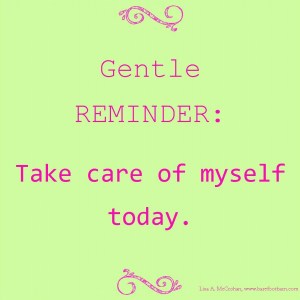 failing to take care of myself when I don’t allow for this in my life. This balance is the one area that I must continue to work on with regard to self-care and I am a work in progress. Each day, I get a little more skilled at finding that balance and I know that one day I will master that, too. In the meantime, I look to others that may know how to achieve such balance and learn from them as they part their wisdom on me in little doses. It is for this reason that I collect, if you will, mentors I admire in various ways. To model myself after the qualities I admire in them and hope to achieve in myself one day. This, too, could be considered caring for myself, I suppose.
failing to take care of myself when I don’t allow for this in my life. This balance is the one area that I must continue to work on with regard to self-care and I am a work in progress. Each day, I get a little more skilled at finding that balance and I know that one day I will master that, too. In the meantime, I look to others that may know how to achieve such balance and learn from them as they part their wisdom on me in little doses. It is for this reason that I collect, if you will, mentors I admire in various ways. To model myself after the qualities I admire in them and hope to achieve in myself one day. This, too, could be considered caring for myself, I suppose. With all things considered, I feel that I am right where I belong and that these challenges are helping me to become a better version of myself- the best me I can hope to be today, tomorrow, and going forward. I am grateful that there are so many wonderful opportunities to grow as a person on so many different levels here at my new school and in my new town, from the inspiring and intellectually brilliant professors who students can learn from both academically and personally to the supportive friends I have made so quickly here. While this adjustment period has presented some stress for me temporarily, it’s also just that- temporary. I’m not worried at all about how I will adjust and I know that this is part of the process in becoming the person I want to be one day. Therefore, I welcome these experiences with open arms and nothing short of excitement.
With all things considered, I feel that I am right where I belong and that these challenges are helping me to become a better version of myself- the best me I can hope to be today, tomorrow, and going forward. I am grateful that there are so many wonderful opportunities to grow as a person on so many different levels here at my new school and in my new town, from the inspiring and intellectually brilliant professors who students can learn from both academically and personally to the supportive friends I have made so quickly here. While this adjustment period has presented some stress for me temporarily, it’s also just that- temporary. I’m not worried at all about how I will adjust and I know that this is part of the process in becoming the person I want to be one day. Therefore, I welcome these experiences with open arms and nothing short of excitement.



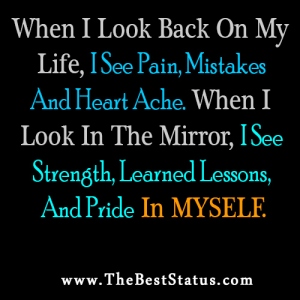
















 Profits Prioritized Over Public Health
Profits Prioritized Over Public Health Insurance Companies Contribution to the Problems
Insurance Companies Contribution to the Problems Practitioners Practicing & Prescribing Outside of Scope of Their Training & Expertise: The Implications on Public Health, Wellbeing, & Safety
Practitioners Practicing & Prescribing Outside of Scope of Their Training & Expertise: The Implications on Public Health, Wellbeing, & Safety While some argue that allowing general practitioners to treat mental health disorders improves access to treatment overall, these general, doctors who aren’t adequately educated, trained, or specialized simply cannot maintain standard of care in this area of healthcare because they do not know the research on mental health disorders, treatment, or related issues, including efficacy rates of various treatments for specific psychiatric disorders. That is why an article published by the APA noted that “[…according to a study last year by the Centers for Disease Control and Prevention (CDC),] patients [often receive psychotropic medications] without [ever] being evaluated by a mental health professional,” instead of being informed of alternative treatment options that are almost always safer and may have higher rates of symptom reduction and remission, as well as lower rates of relapse (Smith). The article goes on to highlight that “[when] Americans visit their primary-care physicians and […] walk away with a prescription for an antidepressant or other drugs, [they do so] without [ever] being aware of other evidence-based treatments […] that might work better for them without the risk of side effects” (Smith). This doesn’t even address the fact that when these practitioners are completely uneducated on mental disorders, their misunderstanding leads them to think and then make very dangerous remarks to patients that could push one over the edge if they were already suicidal. This is an extremely perilous position to put already vulnerable mental health patients in as they seek help for their diseases. This is simply unacceptable, especially as a standard, common practice. Americans deserve better than this.
While some argue that allowing general practitioners to treat mental health disorders improves access to treatment overall, these general, doctors who aren’t adequately educated, trained, or specialized simply cannot maintain standard of care in this area of healthcare because they do not know the research on mental health disorders, treatment, or related issues, including efficacy rates of various treatments for specific psychiatric disorders. That is why an article published by the APA noted that “[…according to a study last year by the Centers for Disease Control and Prevention (CDC),] patients [often receive psychotropic medications] without [ever] being evaluated by a mental health professional,” instead of being informed of alternative treatment options that are almost always safer and may have higher rates of symptom reduction and remission, as well as lower rates of relapse (Smith). The article goes on to highlight that “[when] Americans visit their primary-care physicians and […] walk away with a prescription for an antidepressant or other drugs, [they do so] without [ever] being aware of other evidence-based treatments […] that might work better for them without the risk of side effects” (Smith). This doesn’t even address the fact that when these practitioners are completely uneducated on mental disorders, their misunderstanding leads them to think and then make very dangerous remarks to patients that could push one over the edge if they were already suicidal. This is an extremely perilous position to put already vulnerable mental health patients in as they seek help for their diseases. This is simply unacceptable, especially as a standard, common practice. Americans deserve better than this.  Controversy on Existence of Problems At All
Controversy on Existence of Problems At All









